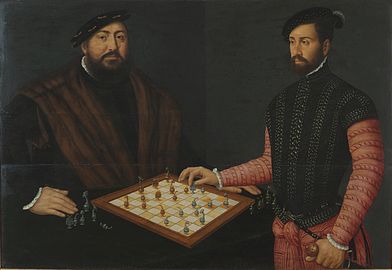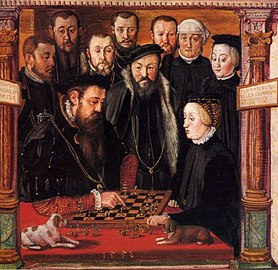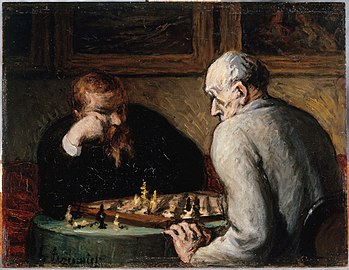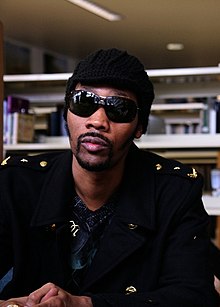
Chess is a board game for two players, called White and Black, each controlling an army of chess pieces, with the objective to checkmate the opponent's king. It is sometimes called international chess or Western chess to distinguish it from related games such as xiangqi and shogi. The recorded history of chess goes back at least to the emergence of a similar game, chaturanga, in seventh century India. The rules of chess as they are known today emerged in Europe at the end of the 15th century, with standardization and universal acceptance by the end of the 19th century. Today, chess is one of the world's most popular games, and is played by millions of people worldwide.

Henri-Robert-Marcel Duchamp was a French painter, sculptor, chess player, and writer whose work is associated with Cubism, Dada, and conceptual art. He is commonly regarded, along with Pablo Picasso and Henri Matisse, as one of the three artists who helped to define the revolutionary developments in the plastic arts in the opening decades of the 20th century, responsible for significant developments in painting and sculpture. He has had an immense impact on 20th- and 21st-century art, and a seminal influence on the development of conceptual art. By the time of World War I, he had rejected the work of many of his fellow artists as "retinal", intended only to please the eye. Instead, he wanted to use art to serve the mind.

The queen is the most powerful piece in the game of chess. It can move any number of squares vertically, horizontally or diagonally, combining the powers of the rook and bishop. Each player starts the game with one queen, placed in the middle of the first rank next to the king. Because the queen is the strongest piece, a pawn is promoted to a queen in the vast majority of cases.

Fischer random chess, also known as Chess960 and freestyle chess, is a variation of the game of chess invented by the former world chess champion Bobby Fischer. Fischer announced this variation on June 19, 1996, in Buenos Aires, Argentina. Fischer random chess employs the same board and pieces as classical chess, but the starting position of the pieces on the players' home ranks is randomized, following certain rules. The random setup makes gaining an advantage through the memorization of openings impracticable; players instead must rely more on their skill and creativity over the board.

Beatrice Wood was an American artist and studio potter involved in the Avant Garde movement in the United States; she founded and edited The Blind Man and Rongwrong magazines in New York City with French artist Marcel Duchamp and writer Henri-Pierre Roché in 1917. She had earlier studied art and theater in Paris, and was working in New York as an actress. She later worked at sculpture and pottery. Wood was characterized as the "Mama of Dada".
Capablanca chess is a chess variant invented in the 1920s by World Chess Champion José Raúl Capablanca. It incorporates two new pieces and is played on a 10×8 board. Capablanca believed that chess would be played out in a few decades. This threat of "draw death" for chess was his main motivation for creating a more complex version of the game.

Caïssa is a fictional (anachronistic) Thracian dryad portrayed as the goddess of chess. She was first mentioned during the Renaissance by Italian poet Hieronymus Vida.

Bruce Pandolfini is an American chess author, teacher, and coach. A USCF national master, he is generally considered to be America's most experienced chess teacher.
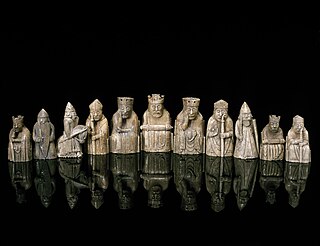
The history of chess can be traced back nearly 1,500 years to its earliest known predecessor, called chaturanga, in India; its prehistory is the subject of speculation. From India it spread to Persia, where it was modified in terms of shapes and rules and developed into Shatranj. Following the Arab invasion and conquest of Persia, chess was taken up by the Muslim world and subsequently spread to Europe via Spain and Italy. The game evolved roughly into its current form by about 1500 CE.

Marcel Dzama is a contemporary artist from Winnipeg, Manitoba, Canada who currently lives and works in New York City. His work has been exhibited internationally, in particular his ink and watercolor drawings.
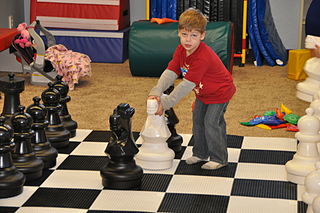
The touch-move rule in chess specifies that a player, having the move, who deliberately touches a piece on the board must move or capture that piece if it is legal to do so. If it is the player's piece that was touched, it must be moved if the piece has a legal move. If the opponent's piece was touched, it must be captured if it can be captured with a legal move. If the touched piece cannot be legally moved or captured, there is no penalty. This is a rule of chess that is enforced in all formal over-the-board competitions.

Shigeko Kubota was a Japanese video artist, sculptor and avant-garde performance artist, who mostly lived in New York City. She was one of the first artists to adopt the portable video camera Sony Portapak in 1970, likening it to a "new paintbrush." Kubota is known for constructing sculptural installations with a strong DIY aesthetic, which include sculptures with embedded monitors playing her original videos. She was a key member and influence on Fluxus, the international group of avant-garde artists centered on George Maciunas, having been involved with the group since witnessing John Cage perform in Tokyo in 1962 and subsequently moving to New York in 1964. She was closely associated with George Brecht, Jackson Mac Low, John Cage, Joe Jones, Nam June Paik, and Ay-O, among other members of Fluxus. Kubota was deemed "Vice Chairman" of the Fluxus Organization by Maciunas.

Nicolas Rossolimo was a Russian Empire-born chess player. After acquiring Greek citizenship in 1929, he was able to emigrate that year to France, and was many times chess champion of Paris. In 1952 he emigrated to the United States, and won the 1955 U.S. Open Chess Championship. He was awarded the title of International Grandmaster by FIDE in 1953. Rossolimo was a resident of New York City until his death.
The Poisoned Pawn Variation is any of several series of opening moves in chess in which a pawn is said to be "poisoned" because its capture can result in a positional loss of time or a loss of material.
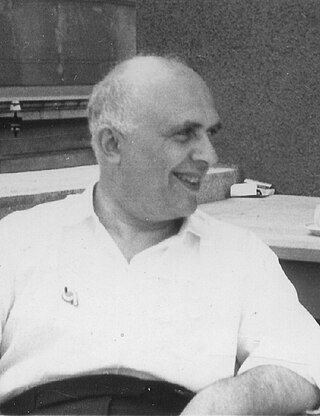
Vitaly Halberstadt was a French chess player, theorist, tactician, problemist, and, above all, a noted endgame study composer.

Scott Kildall is an American conceptual artist working with new technologies in a variety of media including video art, prints, sculpture and performance art. Kildall works broadly with virtual worlds and in the net.art movement. His work centers on repurposing technology and repackaging information from the public realm into art. He often invites others to participate in the work.

Spice Chess is an artist's multiple by the Japanese artist Takako Saito, while she was resident in the United States. Originally manufactured winter 1964–65, and offered for sale March 1965, the work is one of a famous series of disrupted chess sets referred to as Fluxchess or Flux Chess, made for George Maciunas' Fluxshop at his Canal Street loft, SoHo, New York City and later through his Fluxus Mail-Order Warehouse.
"Takako Saito engaged with Duchamp's practice but also with masculinist cold war metaphors by taking up chess as a subject of [her] art. Saito's fluxchess works... question the primacy of vision to chess, along with notions of perception and in aesthetic experience more generally.... Her "Smell Chess," "Sound Chess" and "Weight Chess" reworked the game of chess so that players would be forced to hone non-visual perception, such as the olfactory sense, tactility, and aurality, in order to follow chess rules." Claudia Mesch

The World Chess Hall of Fame (WCHOF) is a nonprofit, collecting institution situated in the Central West End neighborhood of St. Louis, Missouri, United States. It features chess exhibits, engages in educational outreach, and maintains a list of inductees to the U.S. Chess Hall of Fame and World Chess Hall of Fame, the latter category being nominated by FIDE. Founded in 1984, it is run by the United States Chess Trust. Formerly located in New Windsor, New York, Washington, D.C., and Miami, Florida, it moved to St. Louis on September 9, 2011.
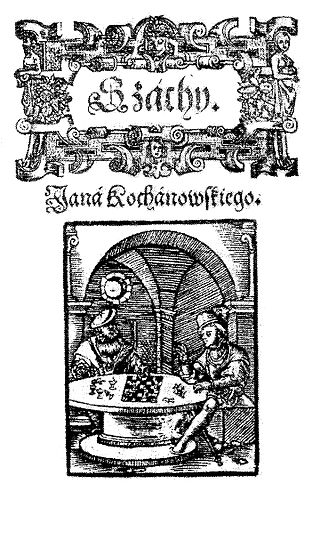
Chess is a poem written by Jan Kochanowski, first published in 1564 or 1565. Inspired by Marco Girolamo Vida's Scacchia Ludus, it is a narrative poetry work that describes a game of chess between two men, Fiedor and Borzuj, who fight for the right to marry Anna, princess of Denmark. The poem anthropomorphises the pieces, presenting the game as a battle between two armies, in a style reminiscent of battle scenes in the works of Homer and Virgil.















